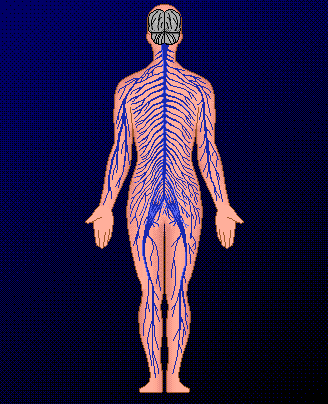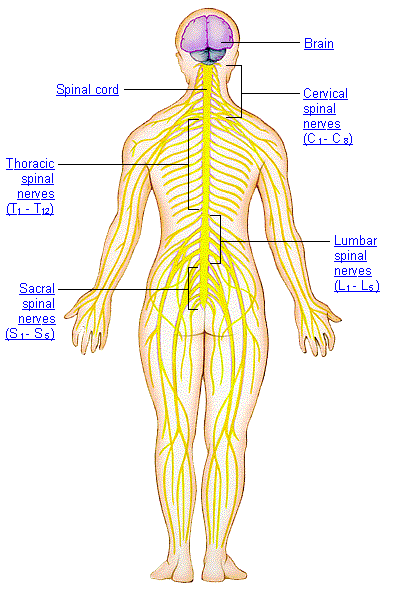 Nervous
System
Nervous
System
The nervous system of the human anatomy is responsible for sending, receiving, and processing nerve impulses.All of the body's muscles and organs rely upon these nerve impulses to function.Three systems work together to carry out the mission of the nervous system: the central, the peripheral, and the autonomic nervous systems.The central nervous system is responsible for issuing nerve impulses and analyzing sensory data, and includes the brain and spinal cord.The peripheral nervous system is responsible for carrying nerve impulses to and from the body's many structures, and includes the many craniospinal nerves which branch off of the brain and spinal cord.The autonomic nervous system is composed of the sympathetic and parasympathetic systems and is responsible for regulating and coordinating the functions of vital structures in the body.
Of all of these components, the brain is the primary component of the nervous system, occupying the cranial cavity.Without its outermost protective membrane, the dura mater, the brain weighs an average of three pounds (about 1.4 kilograms), comprising about 97% of the entire central nervous system.The brain is connected to the upper end of the spinal cord (which connects through the foramen magnum of the skull) and is responsible for issuing nerve impulses, processing nerve impulse data, and engaging in the higher order thought processes.The brain is divided into three parts: the large cerebrum, the smaller cerebellum, and the brainstem leading to the spinal cord.The brainstem is also descriptively divided into the medulla oblongata, the midbrain, and the pons.
![]()

![]()
 Functions
Functions
The
Nerves in organs use electrochemical signals called Nerve Impulses to "talk"
with each other and with glands and muscles. Each impulse produces a short-term
effect on the part it influenced. Some nerve cells act as sensory receptors
that can detect changes occurring inside and outside the body. Others receive
the impulses transmitted from these sensory units and interpret and act
on information that they receive. Others carryimpulses from the brain or
spinal cord to glands and muscles and stimulate these parts to contract
or to secrete various things in your body.
![]()
![]() Major Organs in the System
Major Organs in the System
![]()
 Biofeedback
Biofeedback![]()